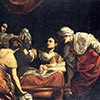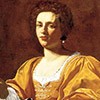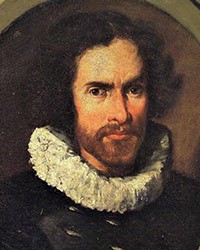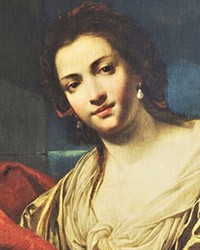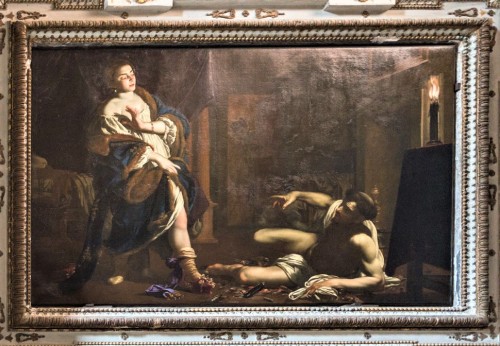
Simon Vouet, The Temptation of Saint Francis, Church of San Lorenzo in Lucina, Chapel of Alaleone

Simone Vouet, Saint Catherine, Palazzo del Quirinale, pic. Wikipedia
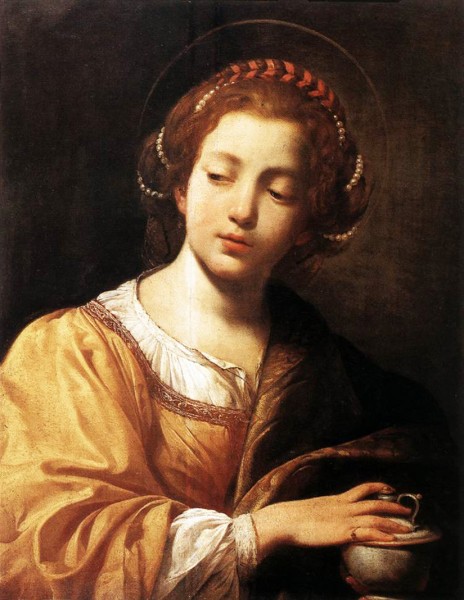
Simone Vouet, Saint Mary Magdalene, Palazzo del Quirinale, pic. Wikipedia
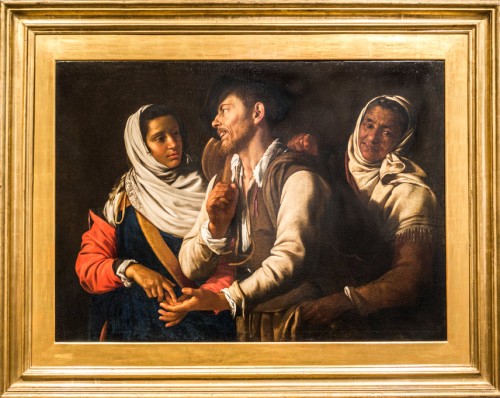
Simone Vouet, Buona ventura, Galleria Nazionale d’Arte Antica, Palazzo Barberini
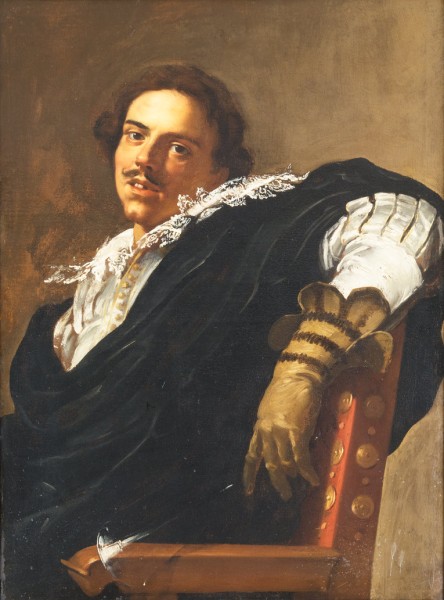
Simon Vouet, Portrait of a Gentleman, Blanton Museum of Art Collections, pic. Wikipedia

Simone Vouet, The Birth of the Virgin, Church of San Francesco a Ripa
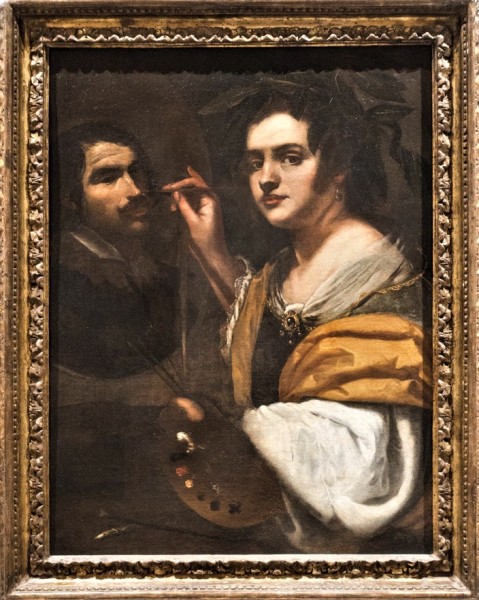
Simon Vouet, Allegory of the Fine Arts, Galleria Nazionale d’Arte Antica, Palazzo Barberini
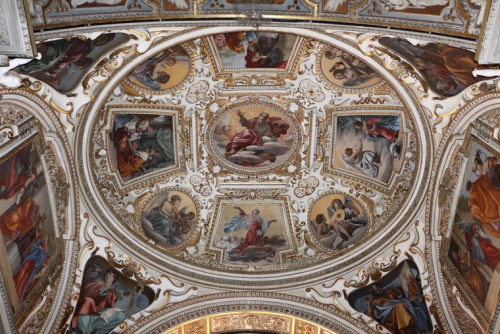
Vault of the Alaleone Chapel, Church of San Lorenzo in Lucina, Simon Vouet, pic. Wikipedia
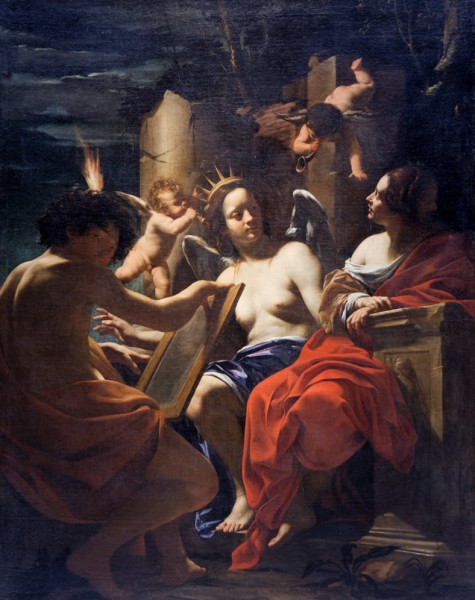
Simone Vouet, Allegory (Intellect, Memory and Will), Musei Capitolini, pic. Wikipedia
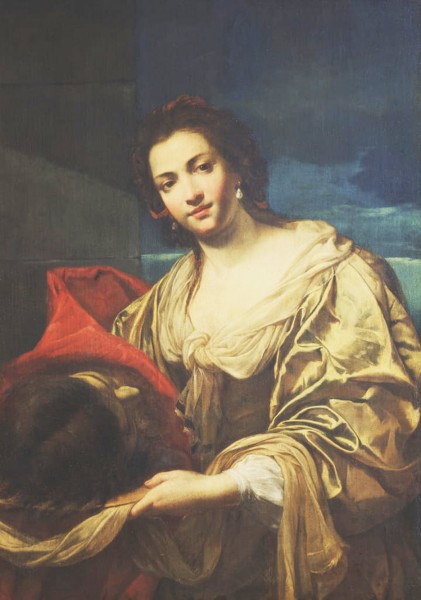
Simon Vouet, Herodias, Galleria Nazionale d’Arte Antica, Palazzo Corsini

Simone Vouet, Portrait of Artemisia Gentileschi, Palazzo Blu, Pisa, pic. Wikipedia
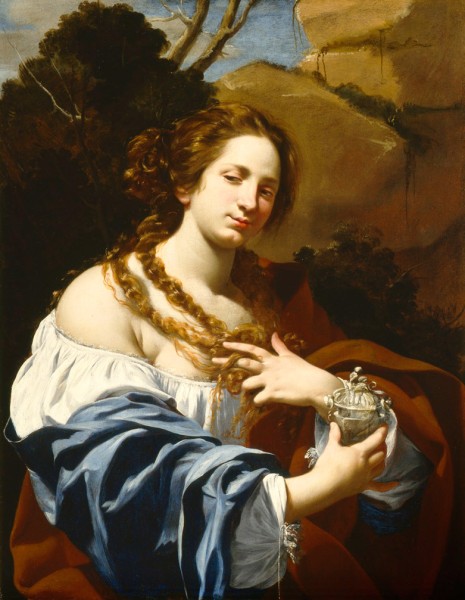
Simon Vouet, Virginia da Vezzo (the Artist's Wife) as the Maria Magdalena, pic. Wikipedia
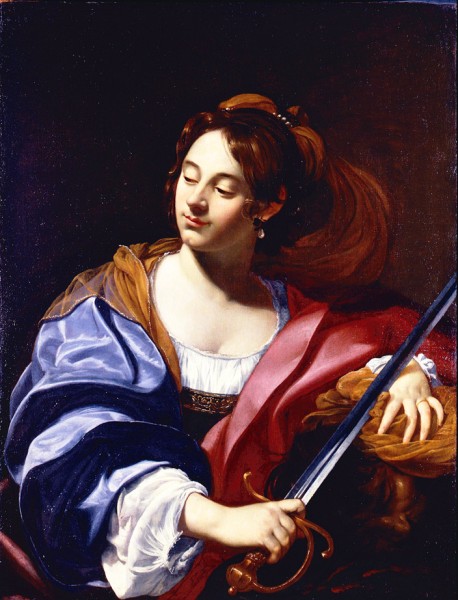
Judith, Virginia Vezzi, Musée des Beaux-Arts, Nantes, pic. Wikipedia
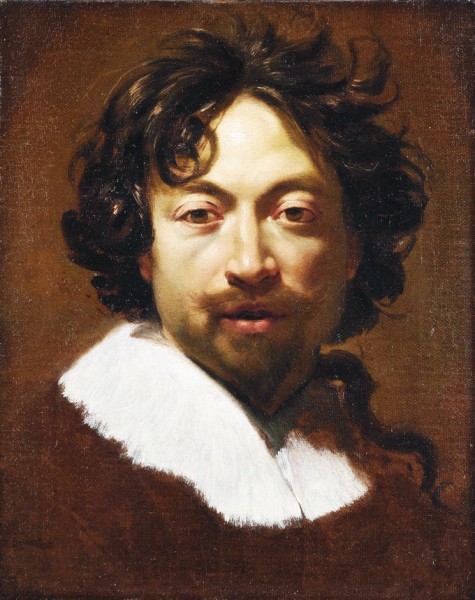
Simon Vouet, Autoportrait, Museum of Fine Arts of Lyon, pic. Wikipedia
If we were to point out an artist who brought French painting out of its provincialism, elevated it to the heights of true art, and at the same time ensured it had the highest status in Europe, then this was Vouet. And everything started in the city on the Tiber at the beginning of the XVII century. It was here that the artist lived and worked for fourteen years (apart from several excursions), and these years proved decisive in his artistic formation.
If we were to point out an artist who brought French painting out of its provincialism, elevated it to the heights of true art, and at the same time ensured it had the highest status in Europe, then this was Vouet. And everything started in the city on the Tiber at the beginning of the XVII century. It was here that the artist lived and worked for fourteen years (apart from several excursions), and these years proved decisive in his artistic formation.
At that time, the Eternal City was the unquestionable center of not only the Catholic world but also the world of art. It was here that talents were burnished and careers developed. Simon Vouet came to Rome at the age of twenty-two and quickly felt right at home in the international community of young painters, who similarly to him admired the beauty of the ancient city, searched for inspirations, profitable commissions, and artistic adventure. However, in comparison to them, he had one decisive advantage. He was the son of the famous Parisian painter (Laurent Vouet), a wonder boy, who at the young age of fourteen showed off his skills – first at the English court, where he was to create a portrait of a “great lady”, then in Constantinople, where he painted a portrait of the sultan from memory. Then he spent nearly a year in Venice, to finally in 1613 reach Rome. Above all, however, he was the protégée of the French king, Louis XIII, who saw his talent and from 1618 on provided him with a financial grant.
In the city on the Tiber, the painter found himself in the group of the so-called Caravaggionists – imitators and interpreters of the great, recently-deceased Michelangelo Merisi. The emblematic work of Vouet, inspired by Merisi was the painting Buona Ventura – immersed in the plebian world, a playful yet moralistic pamphlet. The community of the Roman Caravaggionist painters also included Bartolomeo Manfredi, Carlo Saraceni, or Orazio Borgianni, and a slew of Netherlandish painters, chief among them Gerard van Honthorst. The young artists competed artistically – “eavesdropped” on each other’s paintings, borrowed motifs and topics, and inspired each other.

A pleasant exterior and character, as well as the ability to intake and process impulses most likely helped Vouet in contacts with Roman collectors seeking young talents. These included Cardinal Francesco del Monte (an admirer of Caravaggio’s paintings), as well as Cassiano dal Pozzo, Marcello Sacchetti, and Francesco Barberini. They all noticed the abilities of the young Frenchman and helped him in getting commissions. And thus began the tremendous career of Vouet, which bore fruits during his stay in Rome, in the shape of many paintings. The artist created multi-figure compositions adorning Roman altars and chapels, but above all he catered to the tastes of private collectors, seeking more intimate (but also less expensive) representations. It was for them, especially for Cassiano dal Pozzo, for whom he created a whole series of portraits in half-figure, of handsome youths and pretty girls created in the image of saints and equipped with the appropriate attributes. This collector had in his collection as many as fourteen of Voute's paintings. And he was the art patron and erudite who formed the artistic profile of the young artist (and not only his) suggesting to him attractive topics (historical, philosophical, literary). He also enabled him to study in his famous library, which resulted in the creation of Vouet's allegories (Intellect, Memory, and Will, Musei Capitolini), targeting the Roman intelligentsia.
Thanks to his protectors, the painter paved the way to the most prestigious post – 1624 as the first Frenchman he became the head of the Roman Accademia di San Luca. This post allowed him to receive the most spectacular commission; meaning (the unpreserved) painting The Adoration of the Cross with Saints Francis, Anthony of Padua and John Chrysostom which was to be the setting for Michelangelo’s Pieta in the Basilica of San Pietro in Vaticano. The next was the decoration of the Alaleone Chapel in the Church of San Lorenzo in Lucina, in which until present-day we can admire the immersed-in-darkness nocturnal paintings devoted to St. Francis, including the bold in its topic, amazing work The Temptation of St. Francis.

Vouet worked tirelessly, he also completed commissions coming from other Italian towns. In subsequent years, after a nearly year-long stay in Genoa (1621) his style changed. Slowly he freed himself from the influences of the artistic heritage of Merisi, however, he never discarded it completely – at least not in the Roman period. Gradually the strong Caravaggionist lighting contrast disappeared from his paintings, but on the other hand, they were marked by the impact of such significant Genoese masters as Domenichino or Giovanni Lanfranco. Undoubtedly he also gave in to the charms of the painting of Orazio Gentileschi and his daughter Artemisia Gentileschi. Vouet met the famous woman painter in 1620. The Portrait of Artemisia (Pisa, Palazzo Blu) can serve as a testimony of their friendship, but also the interesting work The Allegory of the Fine Arts, in which the French artist portrayed both himself as well as Artemisia. In the painting, we will notice elegance, luxury, and color richness – the traits which will mark the works created during the final years of his stay in Rome.
In 1626 Vouet married a daughter of the painter Pompeo Vezzi – Virginia, a young creator of miniatures, pastels, and most likely his student, but also a model, whose image we can see in many of his paintings. This marriage started a still unknown chapter in his life. Virginia was a skilled painter, who was admitted to the Academy of St. Luke even before she married Vouet and (most likely) to a significant extent took part in the works the artist created. However, we do not know, whether she created her own works signed by Vouet, or she only helped him in painting them. The testimony that her skills were of the highest order is her painting Judith granting her membership to the Academy of St. Luke, but also paintings she painted later, at the French court.

At the end of 1627, Vouet's stay in the Eternal City came to an end. As a famous and renowned artist, he was called to the court of Louis XIII where he created (along with his students) a workshop. He was granted the title of the chief painter of the king of France. In this way, yet another chapter of his career commenced, unanimously cited by the critics as the start of great French painting. The self-portrait he painted at that time shows Vouet as a young artist who is self-confident, conscious of his abilities, and with hope looks towards the future.
Vouet’s paintings kept in Rome:
- Saint Catherine, 1614–1615, Palazzo del Quirinale
- Saint Mary Magdalene, 1615–1616, Palazzo del Quirinale
- Buona ventura, 1617, Galleria Nazionale d’Arte Antica, Palazzo Barberini
- Lovers, 1614–1618, Galleria Pallavicini
- The Birth of the Virgin, approx. 1618–1620, Church of San Francesco a Ripa
- Allegory of the Fine Arts, approx. 1620, Galleria Nazionale d'Arte Antica, Palazzo Barberini
- Temptation of St. Francis (1624) and St. Francis Renouncing his Goods (1624–1625), decorations in the dome of the Alaleona Chapel, Church of San Lorenzo in Lucina
- Allegory (Intellect, Memory and Will), 1624, Musei Capitolini
- Herodias, approx. 1625, Galleria Nazionale d’Arte Antica, Palazzo Corsini




















